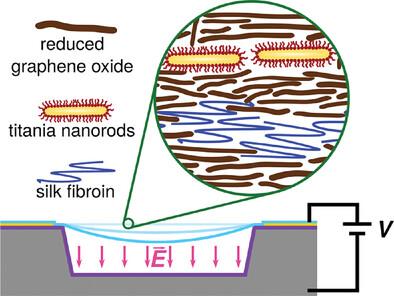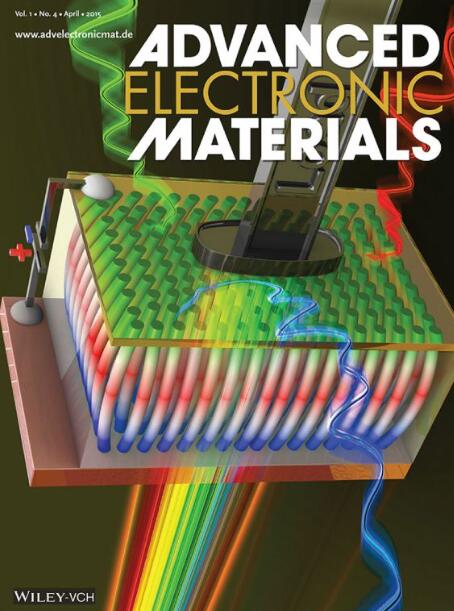Freestanding Membranes of Titania Nanorods, Photocatalytically Reduced Graphene Oxide, and Silk Fibroin: Tunable Properties and Electrostatic Actuation
IF 5.3
2区 材料科学
Q2 MATERIALS SCIENCE, MULTIDISCIPLINARY
引用次数: 0
Abstract
In this study, the mechanical properties of freestanding membranes made of graphene oxide (GO), titania nanorods (TNRs), and silk fibroin (SF) are investigated and their application is demonstrated as electrostatically driven actuators. Using a stamping process, the membranes are transferred onto substrates with circular apertures or square cavities measuring ∼80 to 245 µm in diameter or edge length, respectively. Afterwards, the membranes are exposed to deep-UV (DUV) radiation in order to photocatalytically convert GO to reduced graphene oxide (rGO). Microbulge tests combined with atomic force microscopy (AFM) measurements reveal enhanced mechanical stability after the DUV treatment, as indicated by an increase of Young's modulus from ∼22 to ∼35 GPa. The toughness of the DUV-treated membranes is up to ∼1.25 MJ m−3, while their ultimate biaxial tensile stress and strain are in the range of ∼377 MPa and ∼0.68%, respectively. Further, by applying voltages of up to ±40 V the membranes are electrostatically actuated and deflected by up to ∼1.7 µm, as determined via in situ AFM measurements. A simple electrostatic model is presented that describes the deflection of the membrane as a function of the applied voltage very well.

二氧化钛纳米棒、光催化还原氧化石墨烯和丝素的独立膜:可调特性和静电驱动
在这项研究中,研究了由氧化石墨烯(GO)、二氧化钛纳米棒(tnr)和丝素蛋白(SF)制成的独立膜的力学性能,并证明了它们作为静电驱动致动器的应用。通过冲压工艺,膜被转移到具有圆形孔径或方形腔的基板上,其直径或边缘长度分别为80至245微米。之后,将膜暴露在深紫外(DUV)辐射下,以光催化将氧化石墨烯转化为还原氧化石墨烯(rGO)。微膨胀测试结合原子力显微镜(AFM)测量显示,DUV处理后机械稳定性增强,杨氏模量从~ 22增加到~ 35 GPa。经duv处理的膜韧性可达~ 1.25 MJ m−3,其极限双轴拉伸应力和应变分别在~ 377 MPa和~ 0.68%范围内。此外,通过施加高达±40 V的电压,通过原位AFM测量确定,膜被静电驱动并偏转高达~ 1.7µm。提出了一个简单的静电模型,很好地描述了薄膜的偏转作为施加电压的函数。
本文章由计算机程序翻译,如有差异,请以英文原文为准。
求助全文
约1分钟内获得全文
求助全文
来源期刊

Advanced Electronic Materials
NANOSCIENCE & NANOTECHNOLOGYMATERIALS SCIE-MATERIALS SCIENCE, MULTIDISCIPLINARY
CiteScore
11.00
自引率
3.20%
发文量
433
期刊介绍:
Advanced Electronic Materials is an interdisciplinary forum for peer-reviewed, high-quality, high-impact research in the fields of materials science, physics, and engineering of electronic and magnetic materials. It includes research on physics and physical properties of electronic and magnetic materials, spintronics, electronics, device physics and engineering, micro- and nano-electromechanical systems, and organic electronics, in addition to fundamental research.
 求助内容:
求助内容: 应助结果提醒方式:
应助结果提醒方式:


